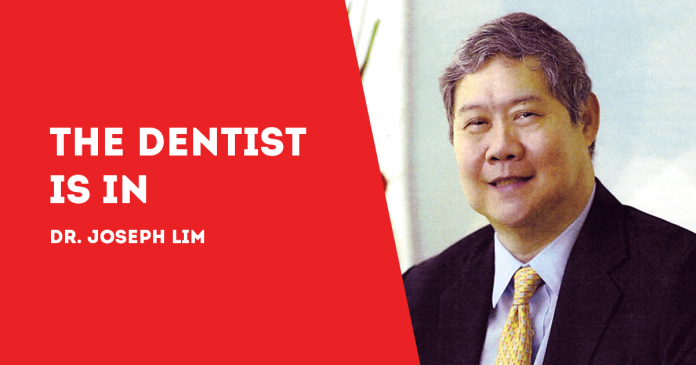
(By Dr. Joseph D. Lim and Dr. Kenneth Lester Lim, BS-MMG, DDM, MSc-OI)
HERE’S another diagnostic tool that makes it easier – and affordable – to detect the COVID virus.
It has been developed by dentists and engineers at the University of Florida.
The portable, hand-held device detects the COVID virus in artificial saliva – and provide results readily, almost immediately
When it is available commercially, the sensor will significantly reduce the days it now takes to learn if a person is positive of COVID or not.
Several do-it-at-home COVID-19 tests are now sold in American drugstores. However, they rely on shallow nasal swabs. Results can take up to 30 minutes.
University of Florida’s device tests saliva with results within 30 seconds.
The fast and reliable portable sensor is low-cost, making it an ideal testing tool in many locations such as dental offices and health care settings, schools, the travel industry, and even at home, said the U.S. National Institutes of Health (NIDCR) which funded the research.
Dr. Josephine Esquivel-Upshaw is the dentist-scientist behind the sensor.
In one of her meetings, she was discussing a dental materials project with a chemical engineer who said their group was trying to develop a home-based sensor that could rapidly test for SARS-CoV-2, the virus that causes COVID-19.
This was in the early days of the pandemic when test samples were usually collected by inserting a long swab deep into the nose.
Dr. Esquivel-Upshaw rightly saw that not too many people are able to do it at home or even willing to do the procedure at all.
As in Eureka moments, the dentist thought there must be a better way to do it. The dentist that she is, she thought of saliva.
This was a time when there was initial evidence that the COVID virus could be found in saliva. If saliva sample could be collected, it would be as easy as spitting, Dr. Esquivel-Upshaw thought. She convinced her colleagues at the University of Florida to start working on the idea. Slightly one year later, they are now seeing the preliminary results of their research.
The instrument works like any other blood sugar monitor now sold over the counter. For the sugar monitor, a disposable strip is inserted into the monitor and a drop of blood is placed on the end of the strip. Within seconds, the result appears on the screen.
For the saliva detector, the Florida researchers bought commercial antibodies that bind specifically to the virus. Then they developed a series of chemical reactions to affix the antibodies to the test strips.
The antibodies are placed on disposable strips that are inserted into the hand-held saliva sensor.
The antibody-laden strip is then exposed to electric current. If the saliva applied to the strip contains SARS CoV-2, the viral particles bind to the antibodies. The binding creates distortions in the electric current; the more virus, the larger the distortions. The data is then converted into numeric values that appear on the screen.
The University of Florida scientists tested the sensor if it can detect a non-infectious version of SARS-CoV-2, as well as the spike protein used by the virus to invade cells. Both were suspended in artificial saliva that was then applied to the test strips.
They found that the device could reliably detect even very small amounts of the virus or its components.
The next step was to measure how the device performed in detecting virus in real saliva from people with confirmed COVID infection. Then it was compared to the PCR (polymerase chain reaction) test – now the gold-standard in COVID testing.
While highly accurate, the PCR test requires time-consuming steps in specially equipped laboratories.
(This is why in the Philippines, as in the United States and elsewhere, it currently takes several days for the Philippine Genome Center or PGC to release the test results.
In October, the PGC satellite facility in our very own University of the Philippines (UP) Visayas, Miag-ao campus, will start genomic testing of COVID samples. For the first time in our neighborhood, it will be able to detect variants of the virus. We don’t need to send samples anymore to the PGC at the UP campus in Diliman.)
The initial results of the University of Florida study are promising, Dr. Esquivel-Upshaw says.
This is especially true as the sensor is designed to detect other diseases and not just COVID.
For example, Dr. Esquivel-Upshaw’s engineering colleagues have used the device to detect the Zika virus and as an indicator of a heart disease.
The plan now is to adapt the sensor to detect protein markers of oral cancer in saliva. When this is successful, results of cancer tests can be released immediately – skipping the days or weeks it now takes waiting for the results. What this means is that patients could start treatment at the earliest possible time.
***
Dr. Joseph D. Lim is the former Associate Dean of the College of Dentistry, University of the East; former Dean, College of Dentistry, National University; Past President and Honorary Fellow of the Asian Oral Implant Academy; Honorary Fellow of the Japan College of Oral Implantologists; and Honorary Life Member of the Thai Association of Dental Implantology. For questions on dental health, e-mail jdlim2008@gmail.com or text 0917-8591515./PN





